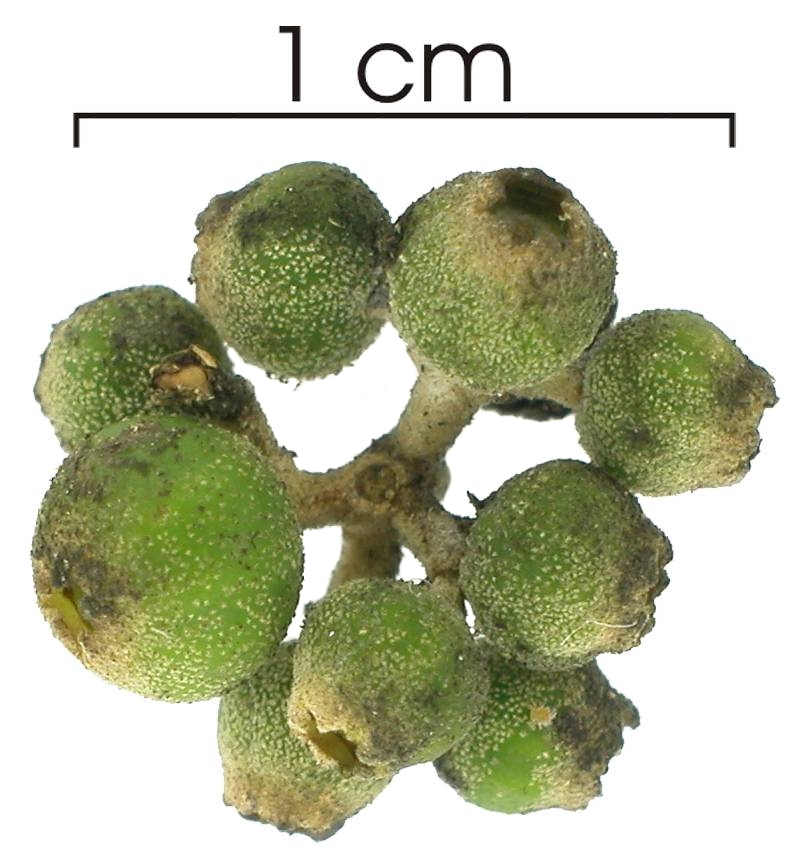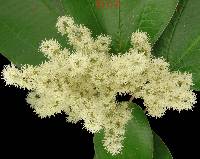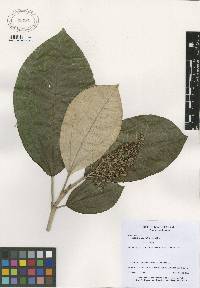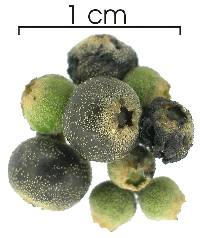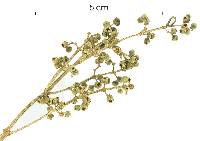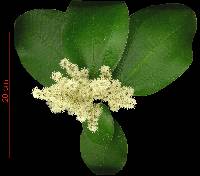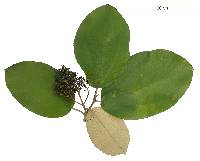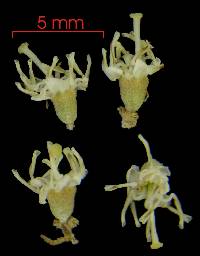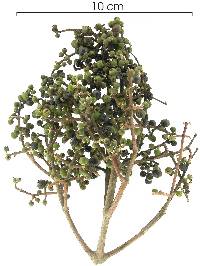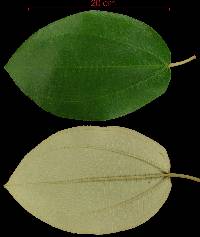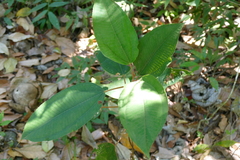

|
|
|
|
Family: Melastomataceae
canillo, more...dos caras, Papelillo, papilillo
|
Description: A small to medium-sized tree, with large, almost round leaves that have bold, parallel, secondary veins and conspicuously white undersides. In the bigger individuals, the bark is distinctive, with a whitish-brown color and vertical papery strips. Reproduction: Flowers are small, white, and carried in dense, pyramidal clusters above the leaves. The flowering pattern of this species is remarkable. For several weeks, trees gradually develop flower buds, and clusters of dull gray buds are visible throughout the dry season. Then on one day in January or February, many individuals over large areas complete flower development, and bright white flower clusters appear on nearly every tree (many along the highway from Panama City to Gamboa, for instance). The following day, the flowers start dropping, and the dull gray color of the clusters is all that remains by the second day. The synchronous flowering can occur two or three times during the same dry season. Later in the wet season, the small blue-black berries appear, and are consumed by many small birds. Distribution: One of the abundant and familiar trees in farmlands and towns throughout Panama, very common along all the roads of the Canal area. It also frequently appears in fence rows in farmland. Within the forest, it only occurs in natural clearings where there is light, but it is still fairly numerous, and at Barro Colorado, it is one of the most common light-demanding species. Similar Species: Quite possibly the easiest tree in central Panama to learn. The large, round leaves with white undersides and conspicuous venation are unmistakable, but note that all Melastomataceae have bold, parallel secondary veins. LK micoim Miconia impetiolaris LK2 is a common shrub that also has whitish leaf undersides, but the leaf-bases fold against the stem. The one species that could be mistaken for M. argentea is LK micoel M. elata, LK2 but it is very rare in the area, only occurring in wet forests or at higher elevations. Uses: The wood is sturdy, and owing to the tree's abundance, rural people in Panama frequently use it for fence posts or for house construction. Descripción: Árbol de 5 a 20 m de alto. Tronco recto y cilíndrico. Corteza exterior de color crema o gris, exfoliante en láminas pequeñas. Ramitas terminales con tallos aplanados. Hojas simples y opuestas, de 8-35 x 5-20 cm, anchamente elípticas, con ápice agudo, bordes finamente dentados o enteros y base redondeada o ligeramente cordada. Las hojas son verdes en el haz y blancas o cremas por el envés, en plantas juveniles son de mayor tamaño, presentan 5-7 nervaduras primarias que salen de la base hasta el ápice y con muchas nervaduras secundarias perpendiculares a las primarias, formando un patrón tipo escalera. Pecíolo de 2-6 cm de largo y con un surco longitudinal pequeño en la parte superior. Flores blancas, pequeñas y aromáticas. Frutos en bayas globosas, de 0.3-0.4 cm de diámetro, verdes, tornándose azules o morados al madurar. Datos Ecológicos: La especie crece a bajas y medianas elevaciones, en bosques húmedos o muy húmedos. Común y ampliamente distribuida en bosques secundarios de Panamá. Crece como invasor en los claros que se originan dentro del bosque maduro. Deja caer parcialmente sus hojas durante la estación seca, pero las repone a inicios de la estación lluviosa. Florece y fructifica de diciembre a junio. Las flores son visitadas por abejas y otros insectos. Las semillas son dispersadas por animales. Los frutos maduros constituyen parte de la dieta de muchas especies de aves (incluyendo algunas migratorias). Las hormigas arrieras cargan la pulpa de los frutos maduros a sus nidos. Especies Parecidas: A menudo se confunde con LK micoel Miconia elata LK2 , pero en M. elata las hojas tienen el envés marrón castaño. También se puede confundir con LK conoxa Conostegia xalapensis LK2 , pero en C. xalapensis las hojas son más pequeñas y estrechas. Usos: La madera es empleada para la fabricación de mangos de herramientas, leña y en la construcción de viviendas rurales. Es un árbol de crecimiento rápido que puede emplearse en plantaciones mixtas para la recuperación de áreas degradadas. Se utiliza en la medicina tradicional y como planta ornamental por su tamaño, forma y follaje. (Sw.) DC., Prodr. 3:182.1828 Common in the forest, especially the younger forest; seedlings common. Flowers principally in the dry season (December to May), with the fruits maturing from January to June. J. Oppenheimer (pers. comm.) says fruits are eaten from March to May by white-faced monkeys. Trees are leafless during the dry season. |
|
|
|

